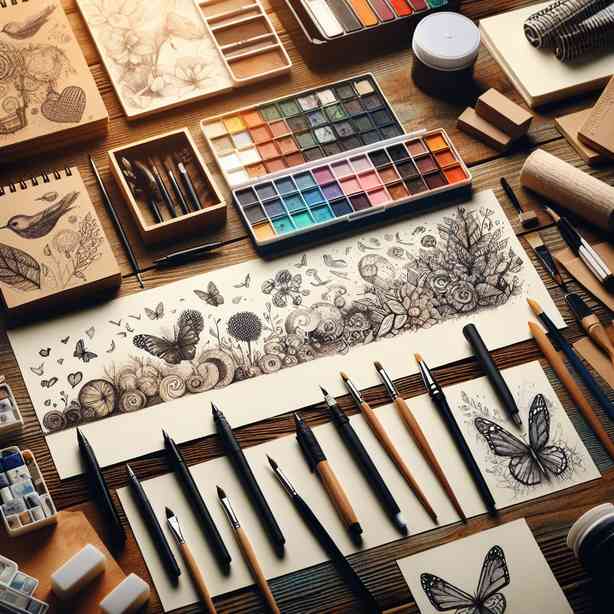
In a world where the ephemeral nature of creativity often dominates, the practice of holding on to every finished piece may seem counterintuitive, yet it holds profound significance. This approach is not merely about collecting remnants of artistic endeavors; it encapsulates a philosophy that intertwines reflection, growth, and narrative—all fundamental elements of the creative journey.
Firstly, keeping every finished piece serves as a tangible representation of one’s progression as an artist or creator. Each piece, regardless of its perceived quality, acts as a marker of where one was at a particular moment in time. It reflects the skills, emotions, and ideas you were grappling with, offering insights into your evolution. This archive becomes crucial when you look back at your earlier works; it showcases your growth and transformation. As you observe the changes and improvements over the years, you might rediscover the original inspirations behind your projects, reigniting your passion and motivation.
Additionally, maintaining a collection of your completed works can provide invaluable learning opportunities. Each finished piece encapsulates lessons learned, whether through experimentation or failure. When you revisit these pieces, you can analyze what worked, what didn’t, and why. This retrospective critique fosters a deeper understanding of your artistic voice and technique, contributing significantly to your development. By examining the decisions you made during each project, you gain insights into your creative process and can refine your approach in future endeavors.
Moreover, retaining every finished piece allows for reflection, a key component of creativity. It offers a space for you to process your experiences and emotions tied to each work. Completing a piece is often accompanied by a sense of release, and keeping that work means preserving the feelings associated with its creation. These memories can enrich your future projects as they inform the emotional and thematic undertones of your later works. Reflecting on your past creations can inspire new ideas and direction, feeding into a continuous cycle of creativity.
Another important aspect of keeping finished pieces is the role they play in storytelling. Each piece can be seen as a chapter in your narrative as a creator. When viewed collectively, they reveal a broader story about your journey—where you started, the challenges you faced, and the milestones you achieved. This storytelling aspect is not only beneficial for personal reflection but can also engage your audience. Sharing this narrative with others can foster a deeper connection with your audience, allowing them to see not just the final product but also the story of struggle, joy, and growth behind it.
In addition to personal benefits, there is a communal aspect to retaining your finished pieces. In an age where sharing creative works online is prevalent, having a comprehensive portfolio showcases your abilities to potential collaborators and audiences. It creates opportunities for networking and engagement, as individuals can relate to the breadth of your work, enhancing your visibility as a creator. This archive can serve as a foundation for discussions, exhibitions, or even mentorship opportunities, as it illustrates the depth and variety of your artistic journey.
Furthermore, preserving every finished piece aligns with the ethos of sustainability within the creative community. It emphasizes the idea that no piece is wasted, as every creation, regardless of its outcome, contributes to your journey. This mindset encourages a culture of valuing every effort and promotes the idea that creativity is a continuous process rather than a linear path. Embracing this philosophy alleviates the pressure to produce only perfection, allowing for a more authentic and fulfilling creative experience.
On a psychological level, keeping each finished piece can also serve as a source of reassurance. The creative process can often be fraught with self-doubt and uncertainty. When you have a physical manifestation of your completed works, it serves as a reminder of your capabilities and accomplishments. In moments of doubt, revisiting these pieces can reignite your confidence and remind you of your potential. It reinforces the idea that you are capable of bringing ideas to fruition, encouraging you to take risks in future projects without fear of failure.
In conclusion, the practice of keeping every finished piece is rooted in a philosophy that champions reflection, growth, storytelling, and community engagement. It transforms the creative journey into a rich tapestry of experiences and insights that not only contribute to personal development but also resonate with others. By cherishing each creation, whether deemed successful or not, you acknowledge the intrinsic value of the artistic process itself. This practice cultivates a deeper understanding of your art, fuels your passion, and enriches the connections you forge within the creative community. Ultimately, it is a celebration of your journey as a creator, a testament to your evolution, and an invitation for others to join you in exploring the vast landscape of creativity.


